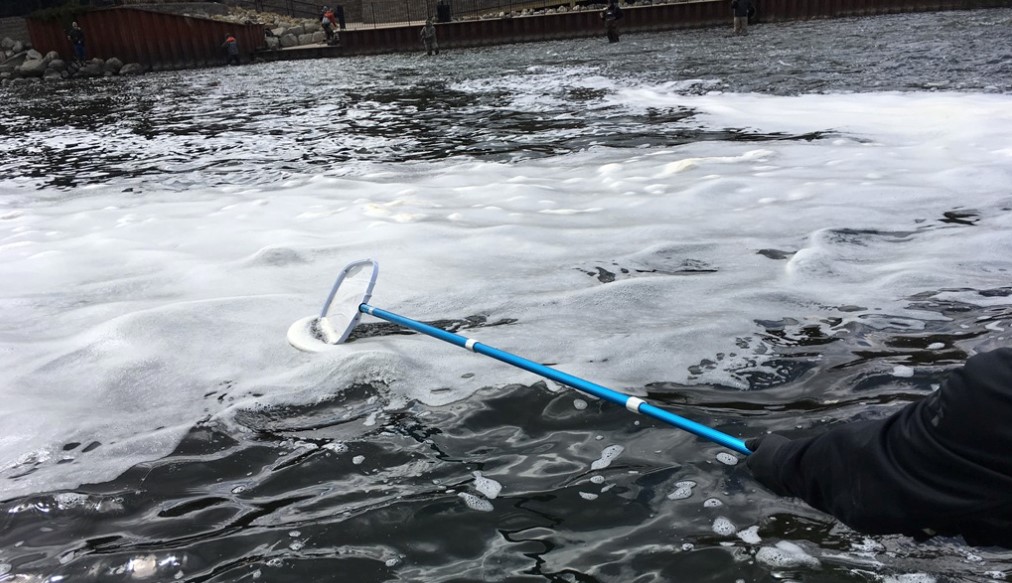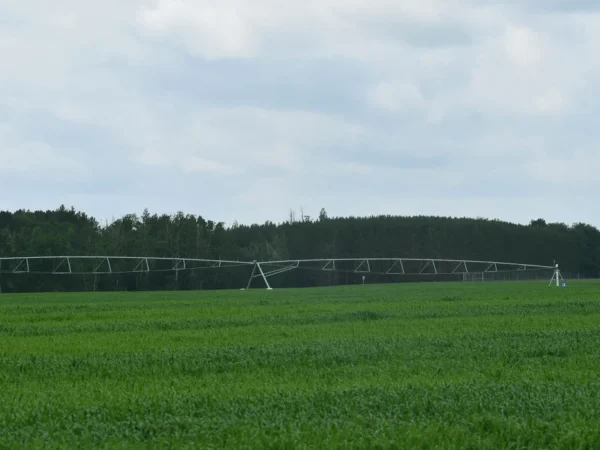
MADISON, Wis. (AP) — Two northeastern Wisconsin lawmakers introduced sweeping legislation Thursday designed to curb water and air pollution from man-made chemicals known as PFAS.
Rep. John Nygren, a Marinette Republican, and Sen. Dave Hansen, a Green Bay Democrat, have been working on the package for months in a rare display of bipartisanship on a major issue in Madison’s toxic political world.
Each lawmaker’s district includes both the Marinette and Peshtigo areas, which have been hard hit with PFAS pollution believed to have originated from firefighting foam. Tyco Fire Products, a unit of Johnson Controls, discovered in 2013 that soil and well contamination on its Marinette fire training property contained PFAS. Four years later, the company acknowledged that the chemicals had spread beyond the facility.
“Unfortunately, Marinette and Peshtigo have become the epicenter of PFAS contamination in Wisconsin,” Nygren said in a video posted on his Twitter account. “While we are still learning about these chemicals, it’s important we act quickly to keep them from entering our drinking water. This bill will be a significant step forward.”
PFAS are man-made chemicals that research suggests can decrease female fertility, increase the risk of high blood pressure in pregnant women and lower birth weights. The chemicals have been used for decades in a range of products, including firefighting foam, non-stick cookware, fast food wrappers and stain-resistant sprays.
The chemicals have drawn more scrutiny in recent years as potentially toxic contaminants in ground and surface water.
The new bill would allocate $7.7 million over a two-year period toward efforts to slow contamination and clean up polluted areas.
The legislation would provide $5 million to create new grants for municipalities to address PFAS contamination when the polluting party is unknown, can’t be found or can’t pay for remediation. The money could also be used to investigate potential PFAS pollution or discharges.
The state Department of Natural Resources would get $1 million to test water systems for PFAS pollution, $150,000 to sample wildlife for PFAS contamination and $120,000 to provide temporary drinking water or treatment system when a party responsible for contamination isn’t available.
The University of Wisconsin System, meanwhile, would get $250,000 to research ways to destroy PFAS. All of the money would come out of the state’s environmental fund.
The DNR would be required to put emergency rules in place establishing PFAS limits for groundwater and set out surface water, drinking water and air emission standards. Democrat Tony Evers already has ordered the DNR to establish permanent groundwater and surface water standards for PFAS, but that process could take years. Nygren said the department could put emergency rules in place much faster.
State health officials would be required to offer free blood testing by September to people living near PFAS-contaminated sites in Marinette, the Peshtigo area and Porterfield. Polluters would have to reimburse the costs.
Health officials also would have to conduct a cancer study in those areas.
The bill also would create a new trust fund to hold money the state wins in PFAS-related litigation.
The measure’s prospects look uncertain. Aides for Assembly Speaker Robin Vos and Senate Majority Leader Scott Fitzgerald didn’t immediately reply to messages inquiring about the bill’s chances in each chamber. Time is running out; both houses expect to wrap up their two-year sessions by March.
Nygren said in a phone interview that he had spoken with Vos and Fitzgerald and that he’s optimistic both chambers will hold votes on the bill.
Evers issued a statement saying he hopes the bill will reach his desk so he can sign it into law.
The bill comes a little more than a week after the Legislature passed another Nygren bill restricting the use of firefighting foam containing PFAS. That measure is sitting on Evers desk. His spokeswoman, Melissa Baldauff, didn’t return a message asking if the governor would sign it.
Featured Image: Michigan DEQ contractor AECOM sampling for PFAS foam in the Rogue River below the Rockford Dam, Photo courtesy of KCHD/MDEQ
___
Follow Todd Richmond on Twitter: https://twitter.com/trichmond1
Watch Great Lakes Now’s coverage of the impact of PFAS on communities in Michigan:




